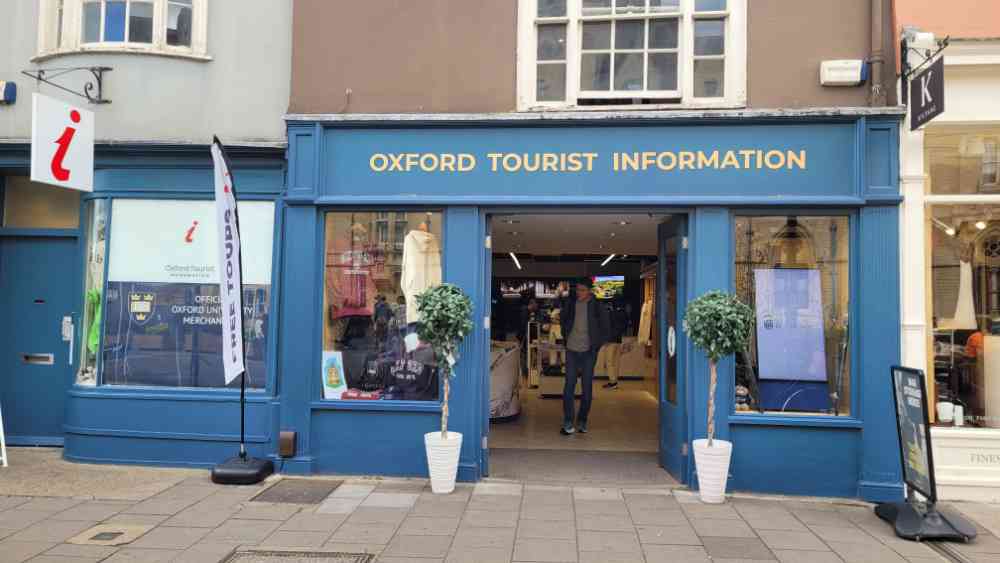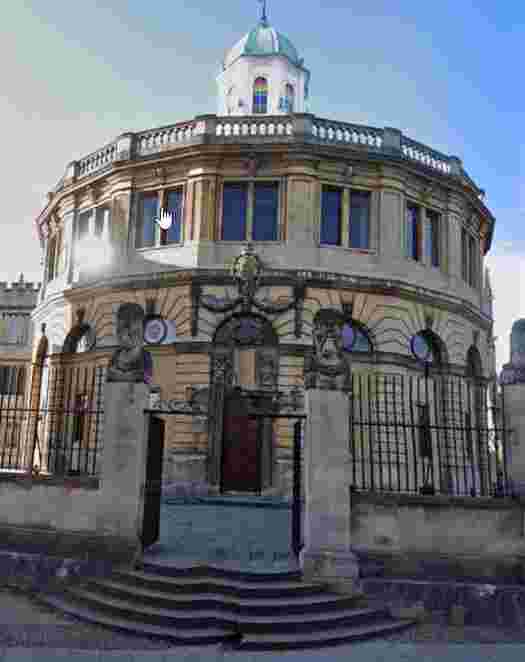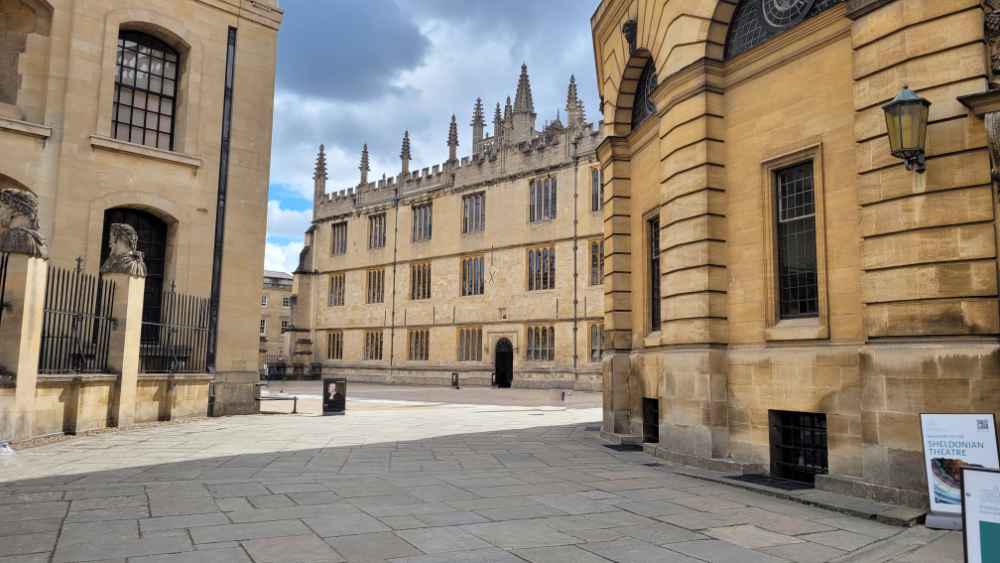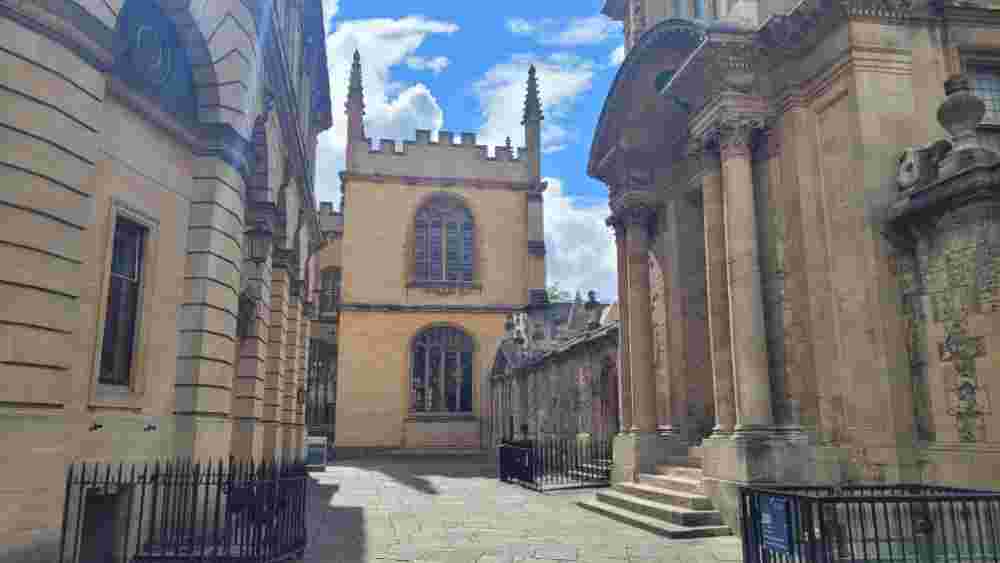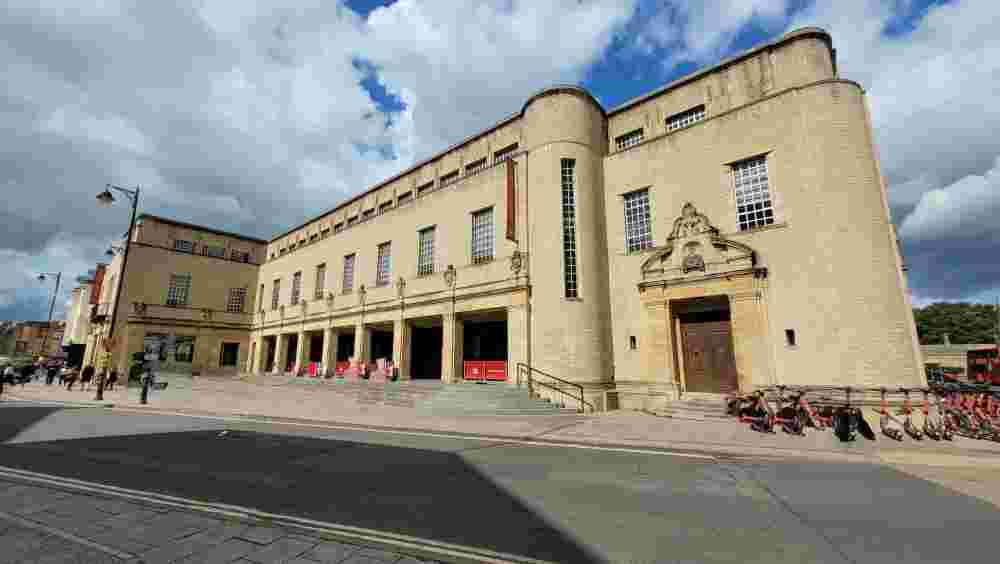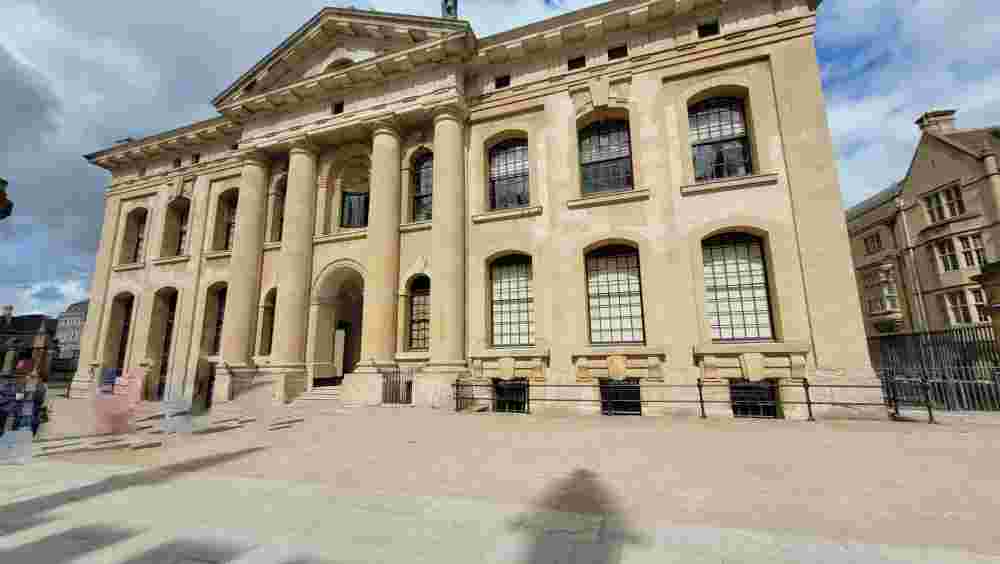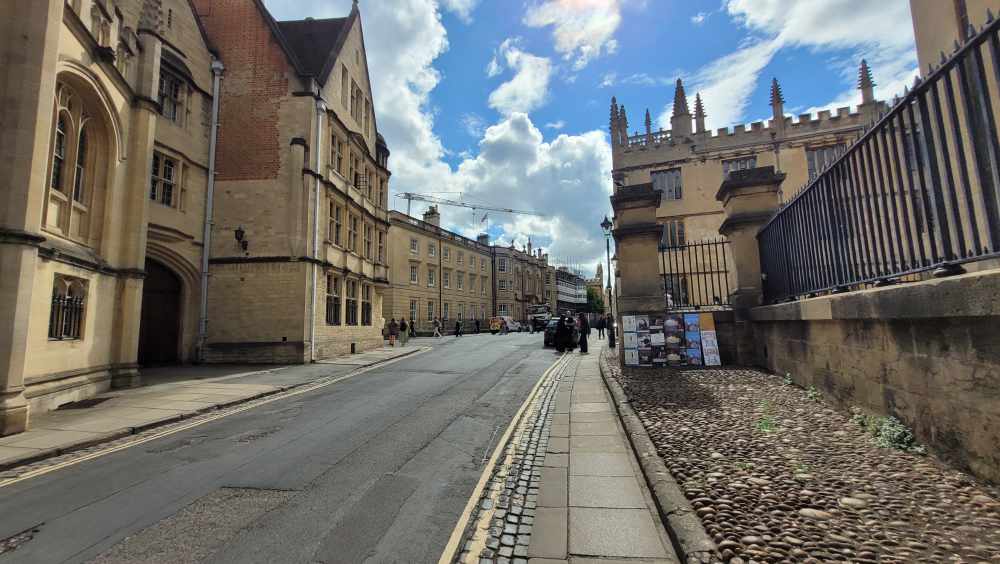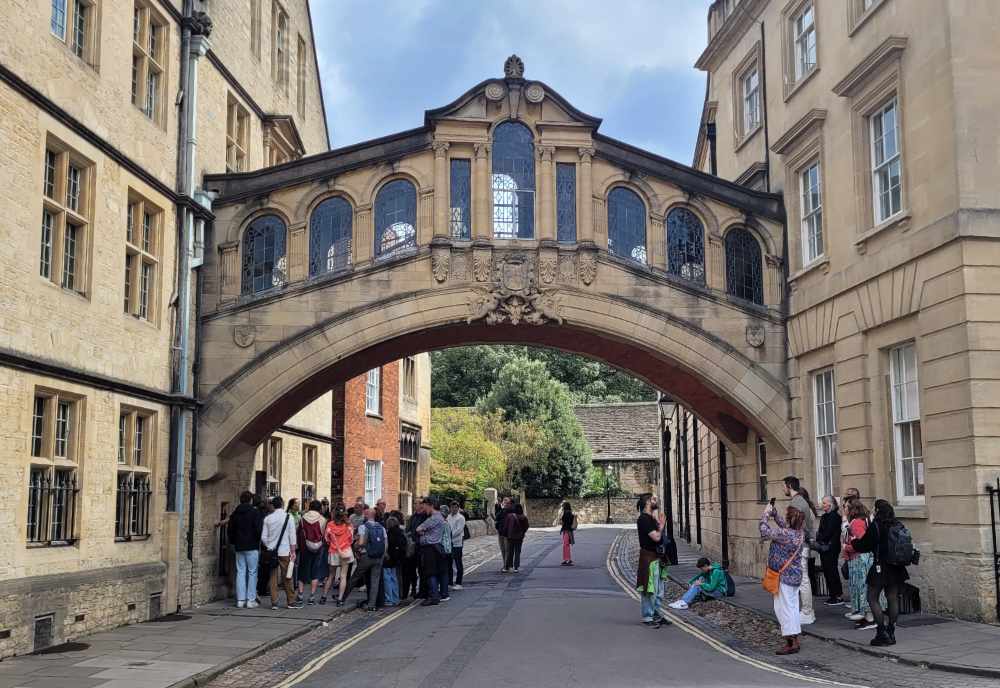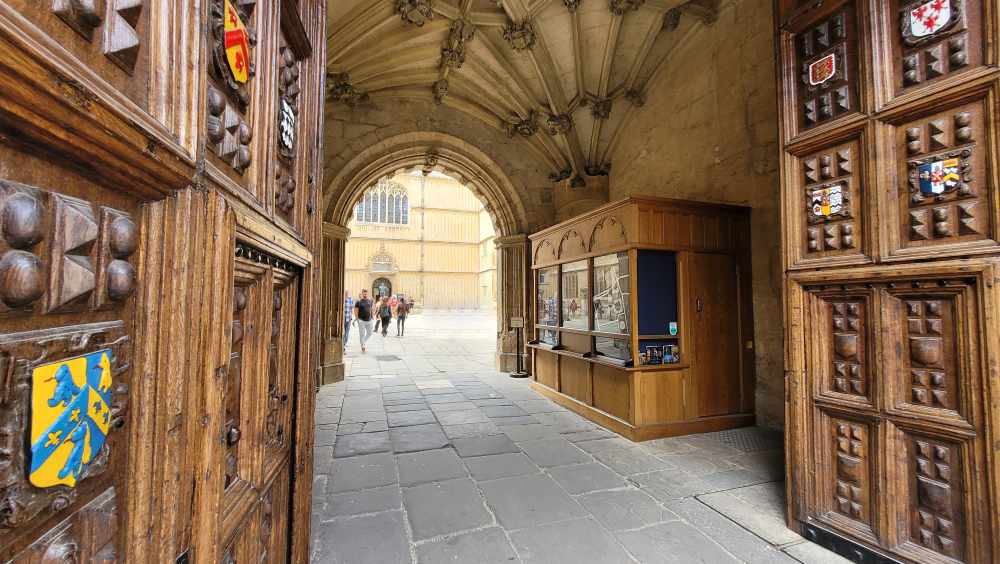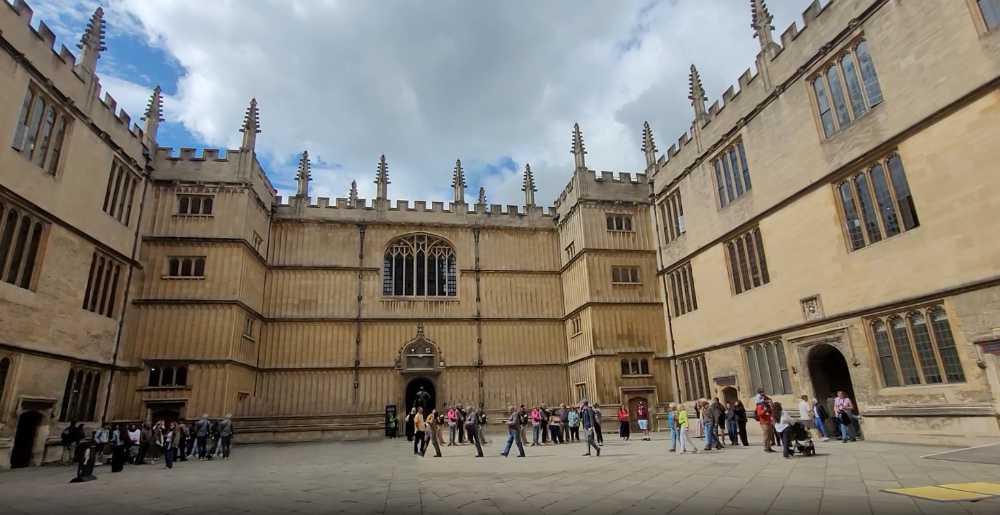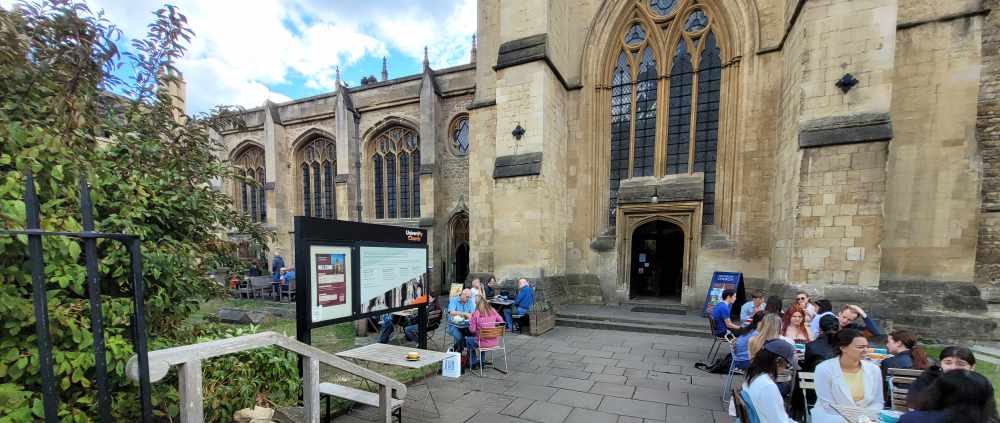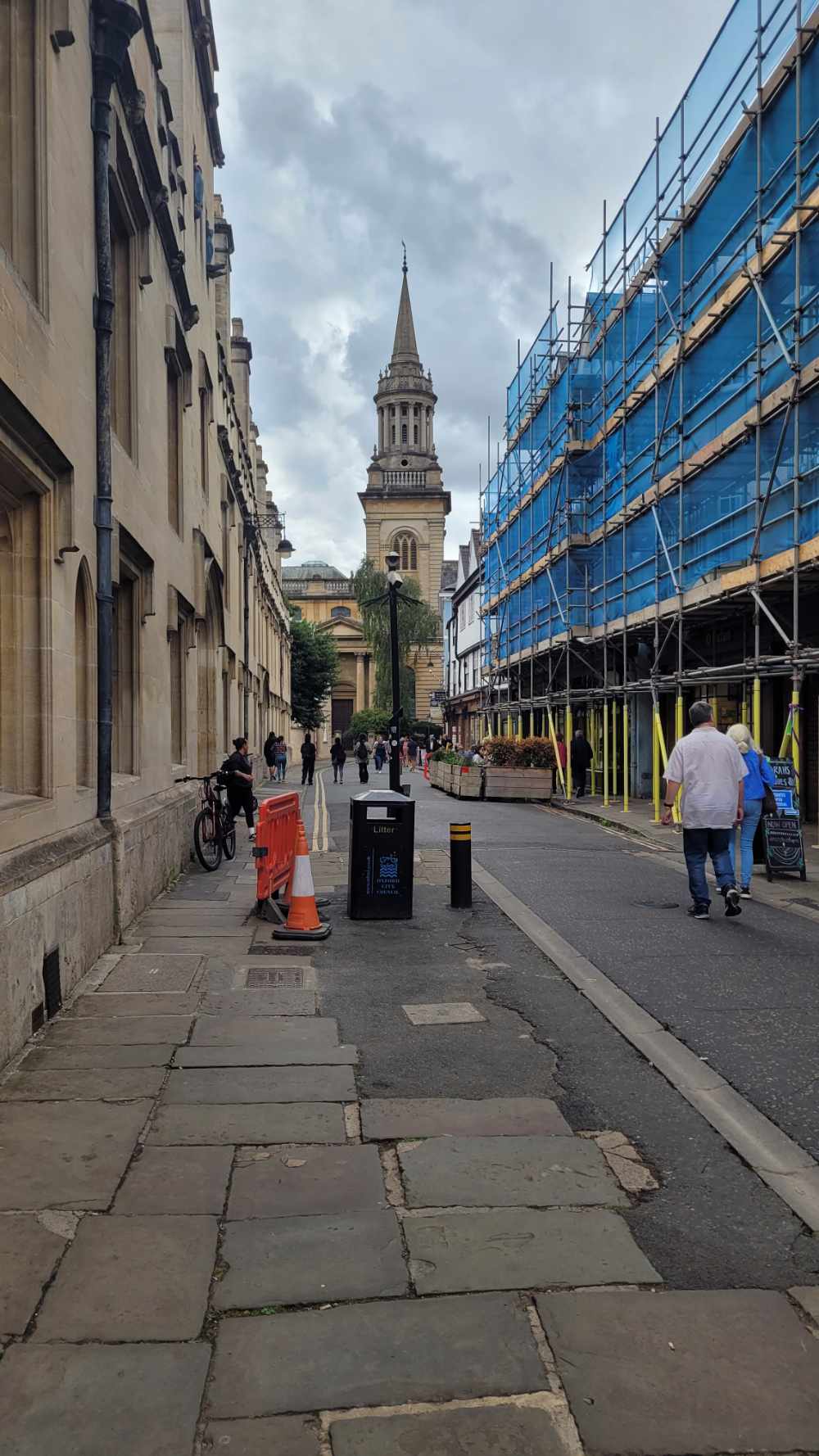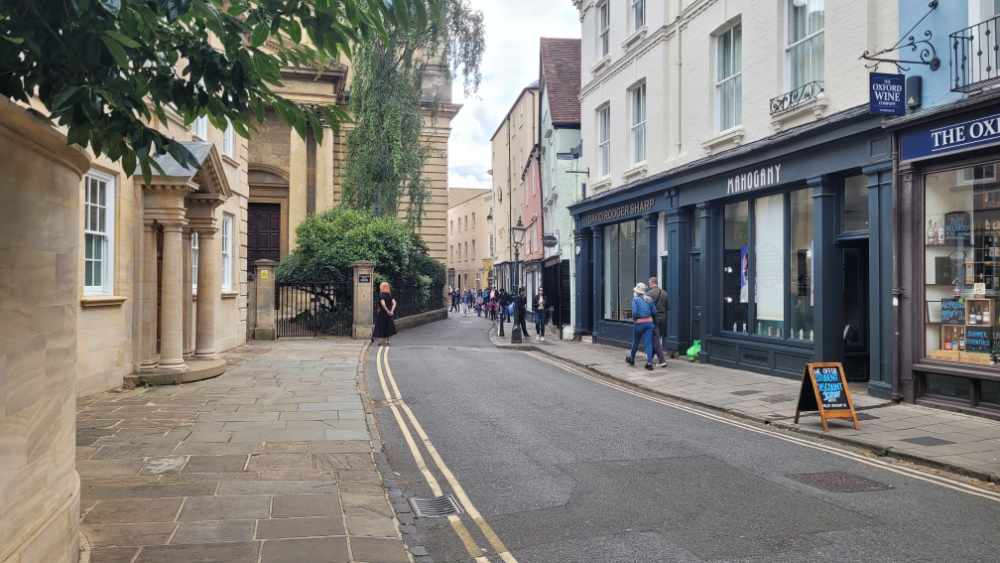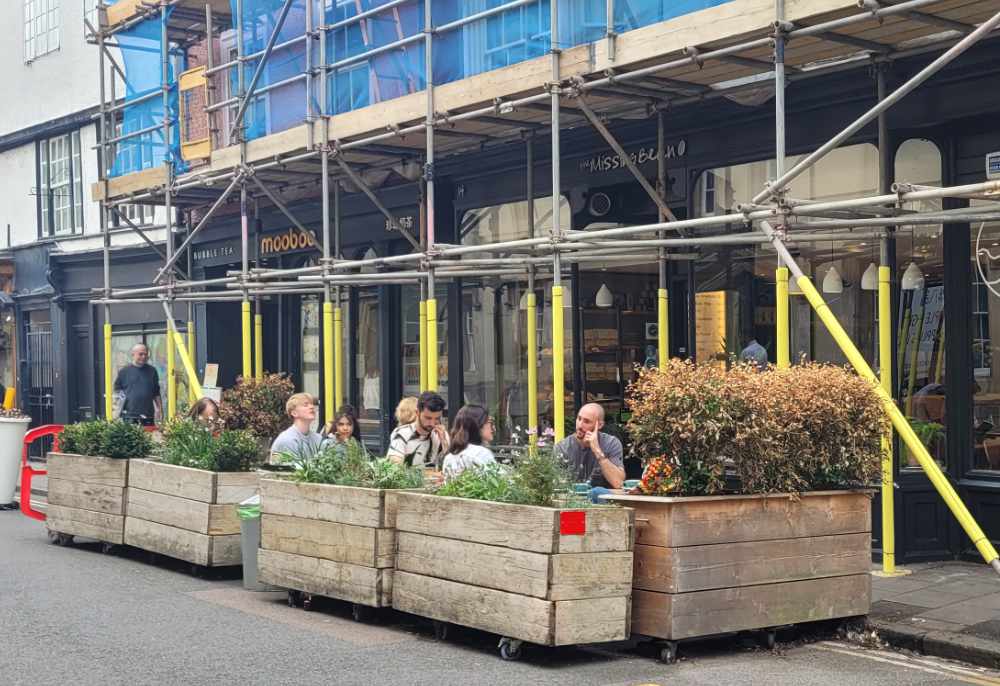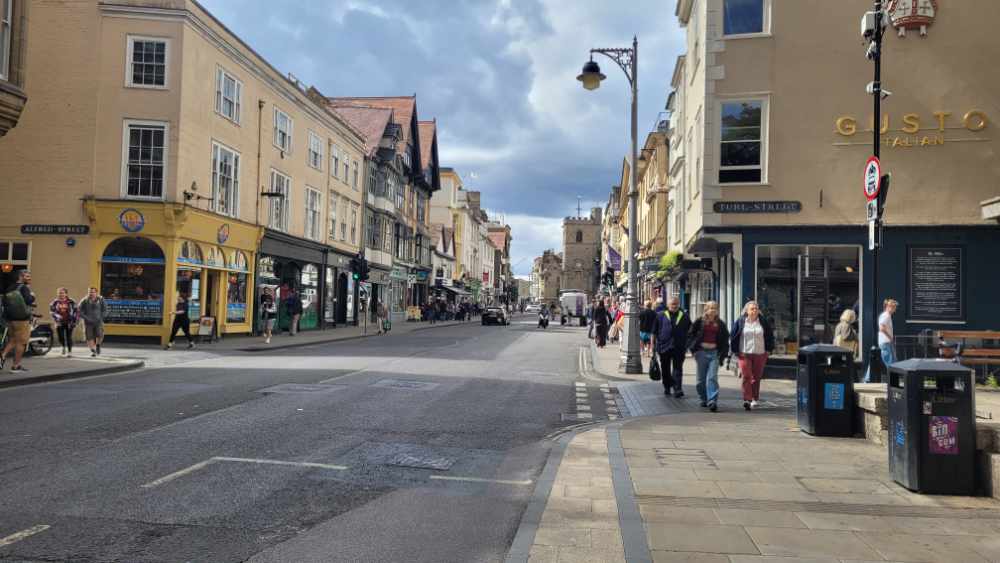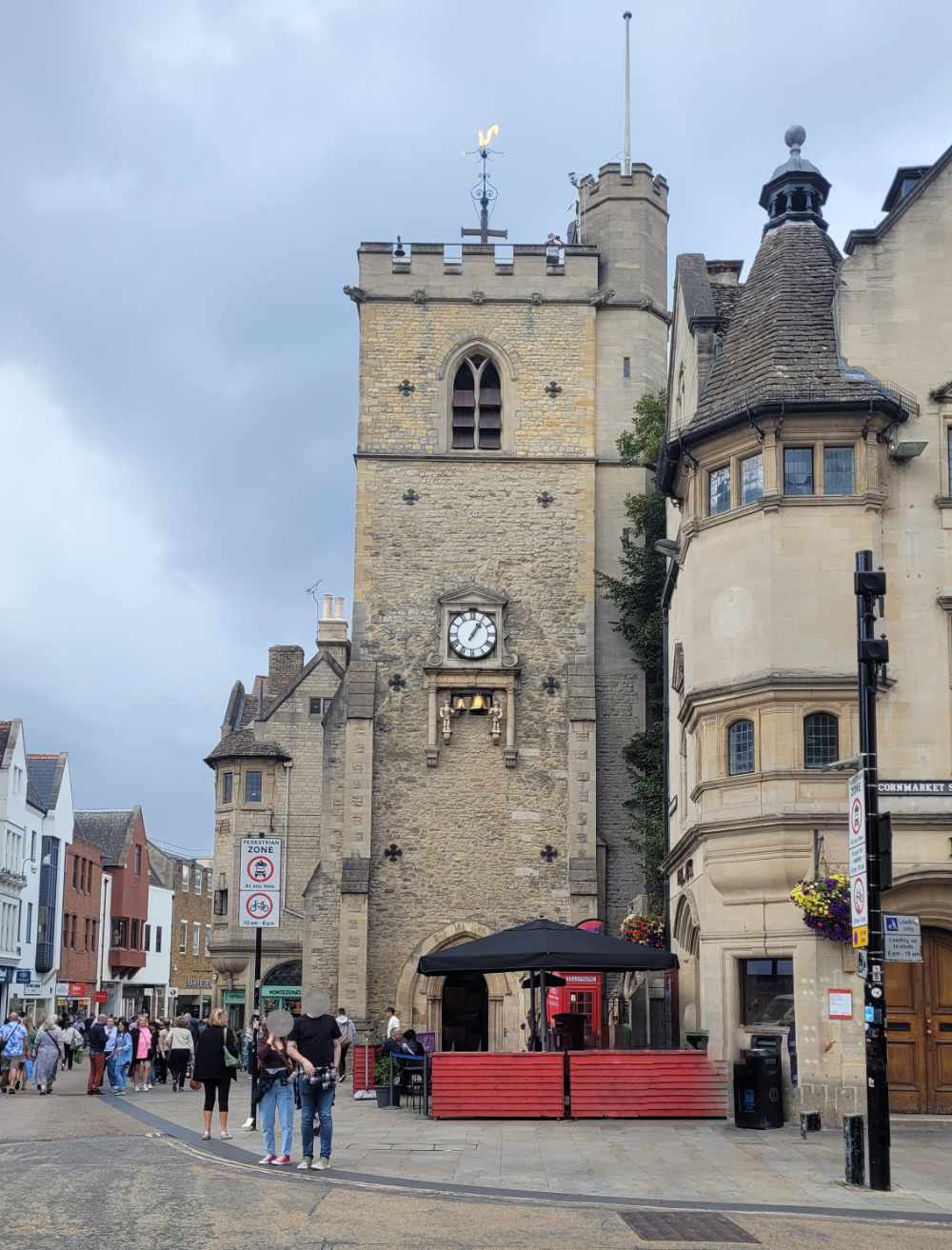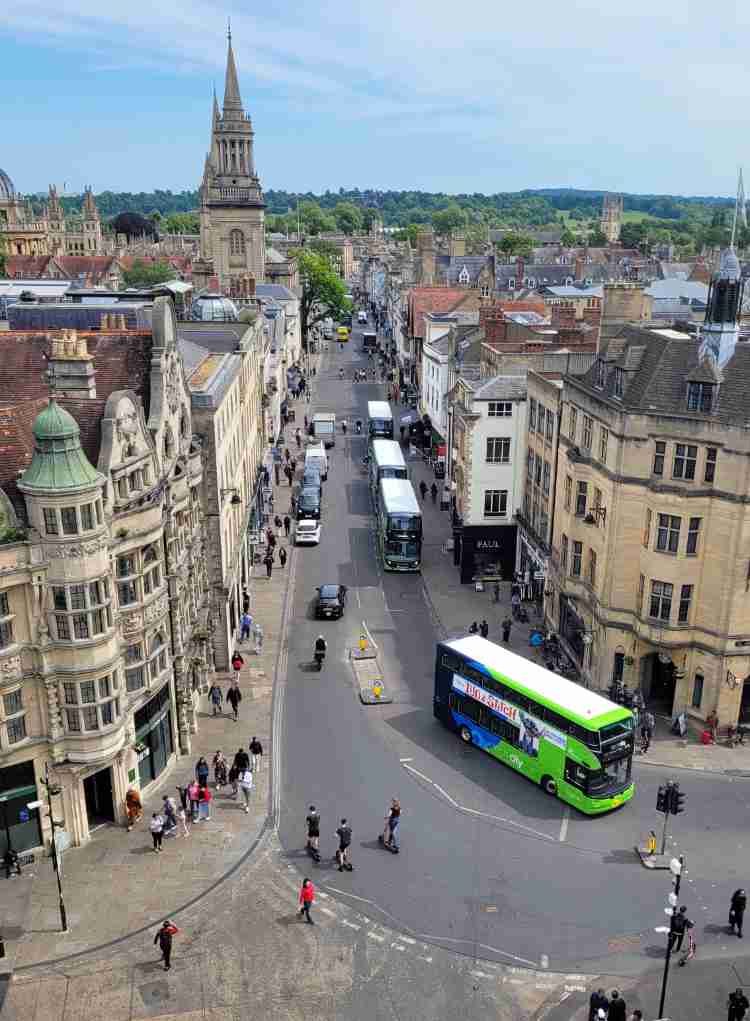Oxford – Walk 1
Tourist Information to the Carfax Tower
A short walking tour through the historic heart of Oxford, taking in iconic landmarks including the Bodleian Library, Radcliffe Square and Turl Street.

Built in 1749, the Radcliffe Camera is Oxford’s iconic domed library at the heart of the university
This short walking tour through the heart of Oxford begins at the Oxford Tourist Information Centre on Broad Street — a vibrant area lined with bookshops and historic colleges. Stroll east past the iconic Sheldonian Theatre and Clarendon Building, turning into Catte Street, where you’re greeted by views of the Bodleian Library, Bridge of Sighs, and University Church of St Mary the Virgin.
Next, you enter the atmospheric Radcliffe Square, one of Oxford’s most photographed spots, surrounded by architectural masterpieces: the Radcliffe Camera, the Bodleian, and All Souls and Brasenose Colleges.rnThe walk continues down Brasenose Lane, a narrow historic passageway leading into Turl Street, a charming street home to three ancient colleges. Finally, you emerge onto High Street, known for its graceful curve and college frontages, before ending at the Carfax Tower, the traditional centre of Oxford and a perfect spot to look back over the rooftops.

Built in 1749, the Radcliffe Camera is Oxford’s iconic domed library at the heart of the university
Map Instructions
Navigating the Map
Follow the numbered markers in ascending order. If the route loops back on itself, markers for both directions may appear at the same location or appear out of sequence. Directions are given at the bottom of the popup associated with each numbered marker.
Interacting with the Markers
Click/tap the numbered markers for information about that point and route directions. Click on the lettered markers for points of interest along the route.
Zooming
Use the zoom controls in the top left corner (e.g. + / −) to zoom in and out of the map. On touch screens, you can also pinch with two fingers. On a laptop, use the mouse wheel to zoom in and out.
Re-centering
Click the ‘RE-CENTRE MAP’ button to re-centre the map.
User Location
If using a mobile device, your location is shown as a blue dot, so you can easily check you’re on course.
Scrolling the Page
If on a touch screen, use the bar on the left to scroll the page.
Route Summary & Highlights
Below is a step-by-step breakdown of the route. Each numbered section matches the markers shown on the above map and includes clear directions to guide you along the way.
Beneath each step, you’ll also find information about nearby points of interest (marked with letters on the map), helping you discover more as you go. You can expand each step to read through the journey in order or use it as a quick overview before setting off.
Tourist Information
Directions:
When exiting the Tourist Information office turn right and walk east along Broad St.
Sightseeing bus
The Sheldonian Theatre
The Weston Library
The Clarendon Building
Broad St./Catte St.
Directions:
Turn right from Broad Street into Catte Street.
The Turf Tavern
The Bridge of Sighs
The Bodleian Library
Catte Street/Ratcliffe Square
Directions:
Turn right into Radcliffe square then right again.
Radcliffe Camera
The Vault (Coffee shop)
Brasenose Lane
Directions:
Turn left from Radcliffe Square into Brasenose Lane.
Turl Street
Directions:
Turn left into Turl St. and walk the short distance southwards to the High St.
